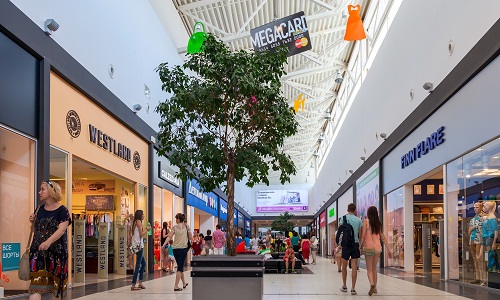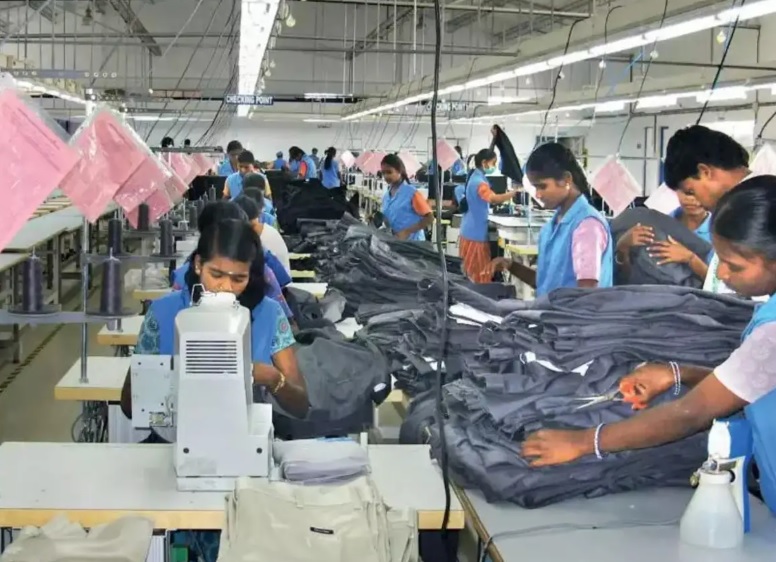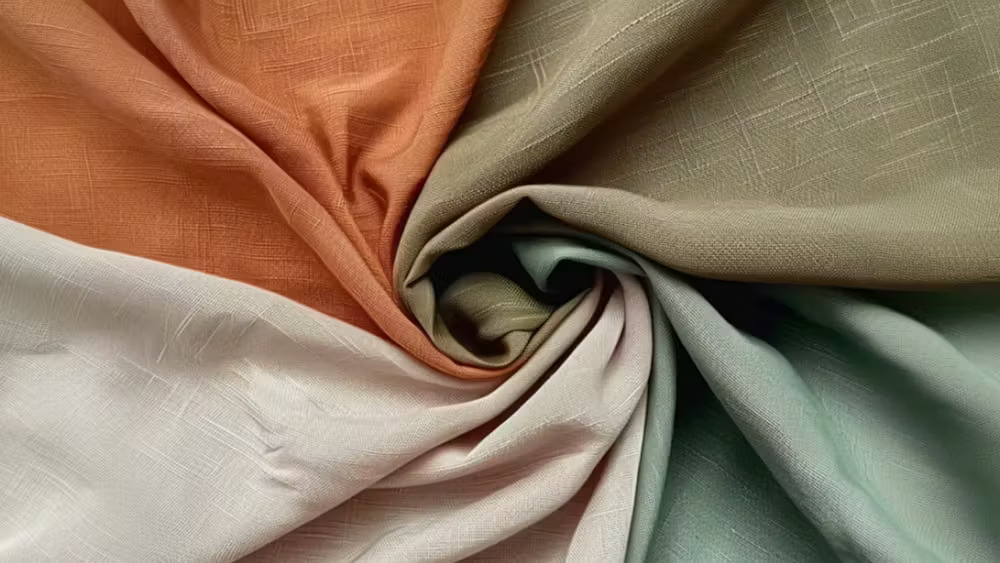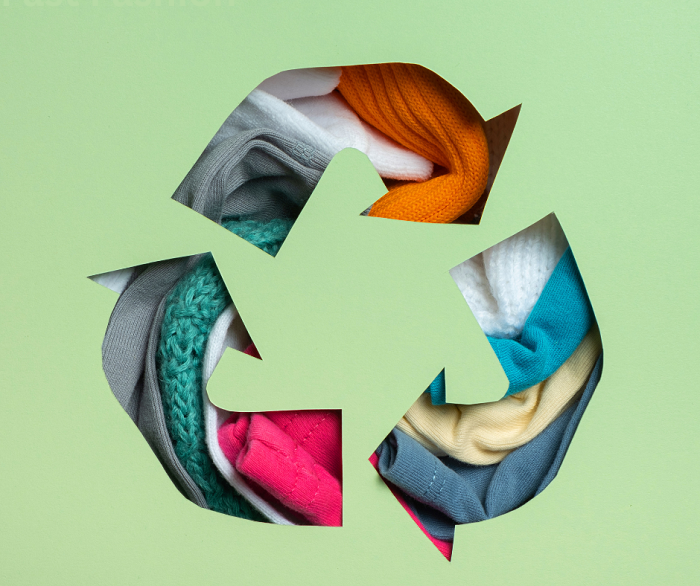FW
Techtextil North America that took place from May 3 to 5, 2016 was a great succes. The show was a gathering of technical textiles, nonwovens, textile machinery, composites, sewn products and equipment. Heat and fire resistant basalt fabrics, recycled fibers, 3D body scanning and automated laser treated denim were some of the highlights.
The event serves the US sewn products industry, ‘Made in America’ manufacturers and the technical textile industry. It is a global business platform that continues to attract potential new customers from North America, Latin America and around the world. With 20 symposium sessions being held throughout the three show days, and four extra bonus sessions taking place, the symposium was buzzing with visitors and speakers discussing new and innovative topics in the industry. Welding, smart future textiles, sustainability, automation, 3D, re-shoring, sewing technologies and more were a part of the nearly 90 presentations.
Country pavilions included Italy, Belgium, China, Germany, China, Taiwan, Business France and SEAMS Made in USA. A great deal of networking took place. There were protective apparel manufacturers and composite manufacturers. Interest in automation technologies was high. Techtextil North America is the only trade show in the Americas dedicated to technical textiles and nonwovens. It allows textile companies to hear from their providers and suppliers based in America, which in turn gives them the opportunity to constantly work alongside their demands.
www.techtextilna.com/
In the first 10 months of the current fiscal year, Pakistan’s textile exports plunged by 7.72 per cent. Low product diversity and inability to explore new export avenues are a key concern facing the country’s textile industry. The country’s exporters are losing competitiveness in international markets as the industry, accounting for nine per cent of GDP and more than 60 per cent of exports is facing a liquidity crunch.
In April, textile exports increased 3.07 per cent over March, but they decreased 3.48 per cent over the same month a year ago. Exports of raw cotton, cotton yarn, cotton cloth, knitwear and bed wear fell 47 per cent, 32 per cent, 9.89 per cent, 1.91 per cent and 4.34 per cent respectively in July to April 2015-’16. Exports of readymade garments and towels rose 4.87 per cent and 0.37 per cent respectively in the period under review.
Total exports declined 12.99 per cent in the first 10 months of the current fiscal year while imports of raw cotton, synthetic fiber, worn clothing and others surged 27 per cent. Many buyers avoid Pakistan because of the security situation and hence entrepreneurs have to travel to Dubai to meet them, which complicates sourcing.
Spinexpo is a professional trade exhibition dedicated to promoting innovation in yarns, fibers and knitwear. The Shanghai-based exhibition has been an ongoing catalyst for the textile and fashion industry and continues to be a driving force in moving both suppliers and buyers forward, urging them to bring newness in design and innovative technical applications to the market.
Buyers have come to recognize Spinexpo as a place of paramount importance, the vanguard of cutting-edge ideas, creativity and inspiration. Among the well known exhibitors at is Xinao. It is one of the world’s leading merino suppliers, known for its dedicated commitment toward environmental issues. Xinao offers three lines of products: yarns for knitwear, yarns for circular knitting and yarns for weaving. In addition, the company partners with Hong Kong and China based knitwear manufacturers.
Another exhibitor Fenix Group which was launched in 1972 as a supplier of Japanese yarns to Hong Kong based companies. It caters to high-end markets with men’s, women's and children’s fashion sweaters. The team creates over 500 designs per season. Fenix is working with over 80 accounts globally. The lead time for a prototype is 14 to 20 days, sampling 20 to 30 days and production 40 to 60 days. Fenix handles an array of techniques for sweater production including printing, washing, embroidery, needle punching and mixed media, from hand knit qualities up to 18 gauges.
Traditional Naga shawls entail a pattern of story-telling and form the literature of any given age, gender, clan, village or tribe. Haphazard plagiarism has led to the loss of this cultural heritage and the narratives that extrapolate culture. Women making these shawls are known to be from poor backgrounds, working hard on their only market skill—the loin loom—passed on through generations; they get a minimal part of the profit.
The trend of gifting intricately etched Naga weaves and crafts has degraded the value and worth of both the culture and the labor involved. The shawls are often used as carpets and bedcovers. Each shawl is carefully designed and woven with bent backs over the loom for hours on end, with careful stitching together of the woven pieces at the end.
Naga textiles have a remarkable heritage enmeshed in a system of hand spin, dyeing, warping, weaving, bead work and designs. Loin loom weaving was once fundamental to the artistic labor of Naga women but due to Christianity and modernisation the younger generation is not aware of its textile heritage.
Very few Naga women and young girls want to learn weaving. This is partly due to the culture of second hand easy-wash-and-wear clothing.
The single window clearance mechanism for importers which India has launched could significantly cut cost and time and help improve ease of doing business. To further simplify inbound shipments, all physical import licenses will be uploaded online with a digital signature. This will do away with the cumbersome compliance measures requiring importers to show physical copies of import licenses or rules of origin certificates to the authorities each time.
The next step will be to do away with the need to present physical copies of licenses each time one imports. The import facilitation move is expected to benefit a large volume of imports and, in turn, economic growth and manufacturing, which is largely import-dependent.
Currently a bill of entry requires an average of three documents. An importer has to go and present physical copies of documents for approval from the authorities. The proposed initiative will allow importers to upload scanned documents with digital signatures.
The single-window mechanism framework launched in April is seeing 17,000 bills of entries every day. Now an importer is not required to go through various other agencies while making a consignment declaration. They are automatically routed through.
"With the start of the economic crisis, many Russian retailers have started moving their production from Asian countries to Russia. With the Russian ruble still weak against major currencies, low costs are tempting some of the world’s leading clothes retailers to consider relocating their production facilities to Russia. The owner of the Zara, Pull & Bear, and Massimo Dutti brands among those in talks with the authorities."

With the start of the economic crisis, many Russian retailers have started moving their production from Asian countries to Russia. With the Russian ruble still weak against major currencies, low costs are tempting some of the world’s leading clothes retailers to consider relocating their production facilities to Russia. The owner of the Zara, Pull & Bear, and Massimo Dutti brands among those in talks with the authorities.
Last March, the world’s second wealthiest person, Amancio Ortega, 79, the owner of the Inditex clothing empire, received an unexpected offer from Russia. The country’s authorities invited the billionaire (Forbes estimates Ortega’s fortune at $67 billion in 2016) to move his factories to Russia, where – due to the weak ruble – production costs have become lower than in China.

Ortega is now considering relocating its production to Russia and is in talks with the Russian Industry and Trade Ministry. Other manufacturers, including H&M, IKEA and Decathlon, are ready to follow Ortega’s example.
Favourable conditions
Zara’s interest in Russian factories is driven by the favorable conditions that have emerged in Russia because of the economic crisis. Thanks to the devaluation of its national currency, Russia has ended up on the list of countries with the world’s cheapest labour.
As per the data from the information and analysis agency Infoline, the monthly cost of a textile factory worker in China is now $250-300, whereas in Russia it is just $200 (15,000 rubles). In these circumstances, the drive to develop the country’s textile industry is a clever move on the part of the Russian authorities, market experts agree.Incidentally, the average salary in Russia is lower than in China and Poland.
It is not surprising that Inditex has turned its attention to production capacities in Russia. Currently, Inditex makes its clothes at factories in Vietnam, Indonesia, China, Turkey and Europe. The group runs 485 stores in Russia and, despite the crisis, managed to open 30 new outlets in 2015, increasing its Russian network by 6 percent, according to the company’s annual report. This makes Russia the third biggest market for Inditex (after Spain and China, with 1,826 and 566 stores respectively).
Foreign players’ interest in the Russian textile industry is further spurred by tensions in Russia’s relations with Turkey after Turkey downed a Russian military aircraft on the border with Syria in November 2015.
Competitive advantage
Russian factories have been working only with local retailers and customers so far. So it remains to be seen how competitive Russian factories are compared with their rivals in China or Vietnam, which operate several shifts and turn out a hundred times as much output.
If clothes under the Zara or H&M brand are made in Russia, their quality will not be adversely affected, insists Lyudmila Ivanova, head of the Fashion Industry Committee under the Russian Textile Industry Union.
Major Russian clothes brands, including Gloria Jeans and Sela, have so far been making their clothes at Asian factories.
Said the vice-president of Russian clothes chain Sela, Eduard Ostrobrod that at the moment, we place our orders with factories in China and Bangladesh, but we are interested in Russian manufacturers. The company is now busy looking for opportunities to move its production to Russia.
With the start of the economic crisis, many Russian retailers have started moving their production from Asian countries to Russia. Thus, the local brands Befree, Zarina and Love Republic have increased the number of orders they place with Russian factories.
Meanwhile, Kira Plastinina has launched its own production in the Moscow Region, not far from the capital. The list of those contemplating a move to Russia is not limited to just Russian brands. The MMD East and West group of companies that forms part of the Bosco di Ciliegi group (which makes clothes for Russia’s Olympic team) intends to build a sports clothing factory in the Kameshkovo industrial part in Vladimir Region (130 miles southeast of Moscow). Investment in the project is estimated at 1 billion rubles ($17.4 million).
The French sports clothing retailer Decathlon has signed a memorandum of intent with the Novosibirsk-based factory S-Tep to produce trainers. To begin with, the factory will produce trainers for Decathlon’s stores in Russia but in future, for the chain’s global network too, the business daily Vedomosti reported in February 2015.
At the same time, many Russian manufacturers are not too overjoyed at the prospect of the arrival of foreign players.
Success stories
Examples of successful integration between global business and the Russian consumer goods industry are many. The Swedish company IKEA, which together with clothes retailers has received an invitation from the country’s authorities, has been successfully cooperating with Russian manufacturers for a long time. IKEA’s purchasing office was opened in Russia back in 1991, long before its first store.
The IKEA in Russia press service said that at present, over 50 percent of volumes sold in IKEA stores in Russia are locally produced. In the textiles category, locally-produced goods make up 40 per cent.Furthermore, IKEA is planning to further increase its local production in Russia.
Currently, the Swedish retailer sources its goods from some 60 Russian factories. Russian manufacturers are fully integrated into the global production and distribution chain: Russian-made goods can be found in IKEA stores in Europe, America and Asia. In addition, IKEA owns four factories in Russia and is planning to launch a fifth one soon.
Hugo Boss shareholders heard about the luxury fashion brand’s illegal treatment of union members in Turkey at the company’s annual general meeting in Stuttgart, Germany.
The company has a long-running anti-union policy in Izmir, which has seen many unionised workers illegally sacked since Industrial Global Union’s Turkish affiliate, Teksif, began organising at the factory in 2011.
Said Industrial Organizing and Campaigns Director Adam Lee, that Hugo Boss’ anti-union behaviour in Izmir is a threat to shareholder value. The ongoing violations have generated negative media coverage. Over 107,000 potential Hugo Boss customers have signed a petition demanding that Hugo Boss respect workers’ rights. The longer these violations in Izmir continue, the greater the risk that the Hugo Boss brand will be damaged.
Out of the 163 lawsuits for unfair dismissals since October 2011, the Turkish courts have sided with workers in 76 per cent of finalised cases. The Fair Labor Association (FLA), which Hugo Boss is affiliated to, also concluded in a January 2016 report that many of these dismissals were related to unionization efforts.
Meanwhile, despite the court decisions and FLA report, Hugo Boss claims there are no problems in Izmir.
The Cotton Advisory Board (CAB) has set up a sub-committee that will work on ensuring sustainability of cotton production. This follows concerns that actual cotton production could turn out to be lower than estimates. Earlier the CAB had estimated that cotton production this season (October 2015 to September 2016) would touch 352 lakhbales.
Howeveractual production could be lower than the estimated level, with the average yield now being 500 kg per hectare as against 570 kg a hectare a few years ago.
The price of Shankar – 6 cotton, a variety popular with textile mills, was Rs33,300 a candy on April 1, going up to Rs 36,500 a candy by the end of April, before settling at Rs 35,000.
However, there is no complaint of shortage of cotton. There are adequate stocks. The area under cotton in the Punjab, Rajasthan, and Haryana is expected to decline, even as farmers in Maharashtra and Telengana show little interest in the crop.
India is the world’s leading cotton producer. A clearer picture is expected to emerge after the monsoon sets in. Rains over cotton growing belts are expected to be bountiful for the first time in three years.
Texfair is being held in Coimbatore, May 20 to 23, 2016. This is an exhibition for the textile industry and showcases modern developments. It is a platform for textile mills to zero in on their requirements, meet all suppliers under one roof and plan their investments, cost cutting options and ways to improve their quality. Textile mills on an average spend three per cent of their annual turnover on spares and accessories and six per cent on modernisation.
The event has 220 exhibitors displaying their products across 231 stalls. Major products on display are textile machinery, spares, accessories, testing equipment and electrical and electronic components. It is featuring exhibitors from China and Italy besides Gujarat, New Delhi, Goa, Maharashtra and Punjab.
The objectives of the fair are to provide a platform for stakeholders to zero in their investments and expenses prudently, showcase their inventions and cost effective items and other products, enable technocrats and shop floor technicians to update their knowledge on the latest technology and create an awareness on cost cutting, to encourage micro, small and medium entrepreneurs also to showcase their products and get exposure to the market.
The Southern India Mills’ Association has so far conducted nine exhibitions of textile machinery, spares and accessories since 2001.
The apparel and footwear industries in the US stand to gain once the TPP comes into force. Over the next 15 years, apparel employment is projected to increase by 0.9 per cent and output by one per cent. Footwear employment will increase by 0.8 per cent and output by 0.5 per cent.
US consumers will also benefit as substantial duty savings help drive up income gains by about 57.3 billion dollars by the year 2032 – or about 600 dollars a year for the average family of four.
So the apparel and footwear industries say the TPP should be considered, approved, and entered into force as soon as possible and that every year it’s delayed the industry will lose more than a billion dollars in lost duty savings.
The American Apparel & Footwear Association, formed in 2000, provides its members with an array of services and resources designed to drive competitiveness in the global market. These services and resources include helpful production and safety tools, best-in-class research and reporting, and other industry best practices. The association feels the TPP will provide opportunities to reduce costs, stay competitive, and enter new markets since nearly every US job in this business depends on access to foreign customers or global supply chains or both.












